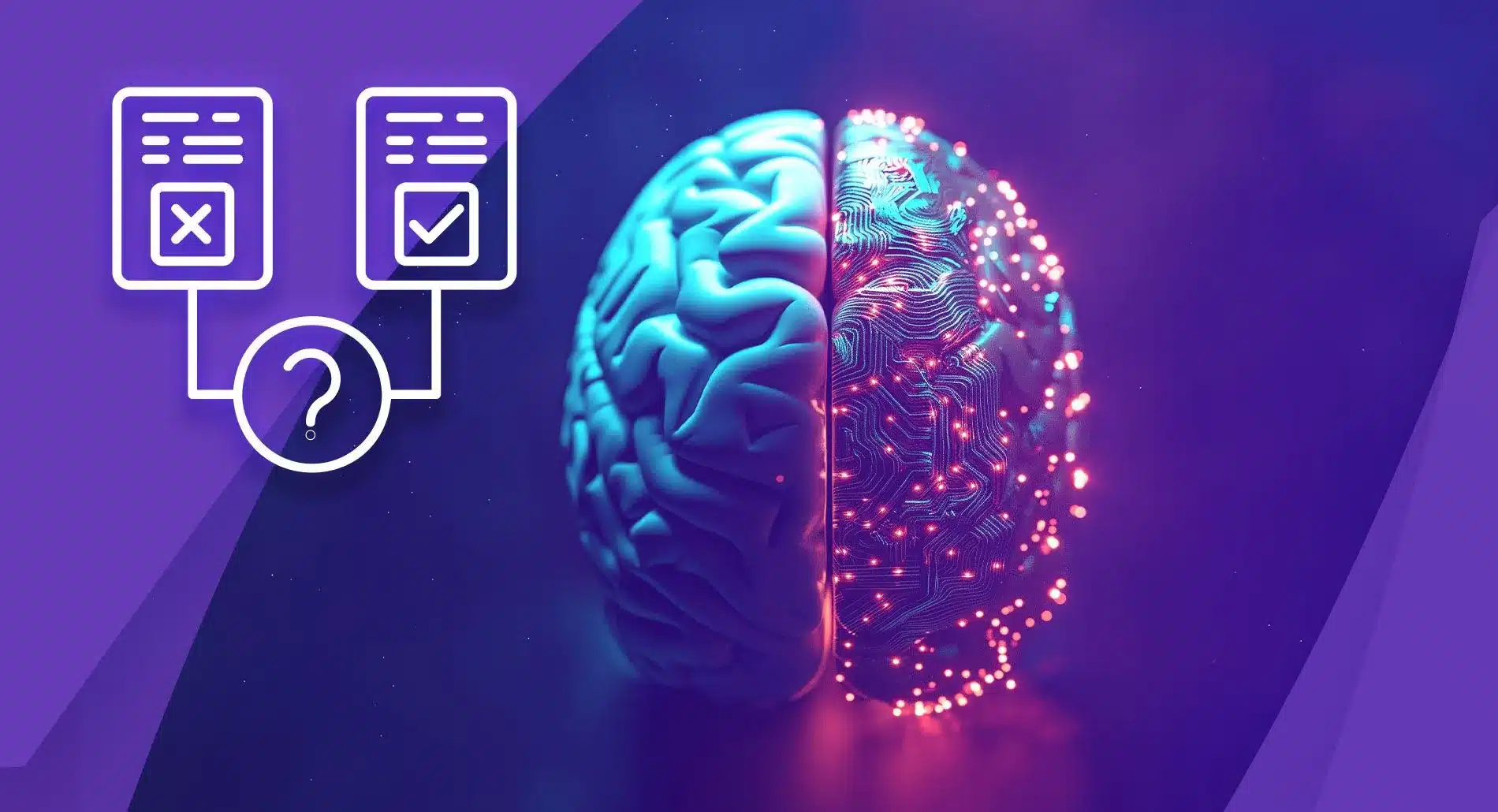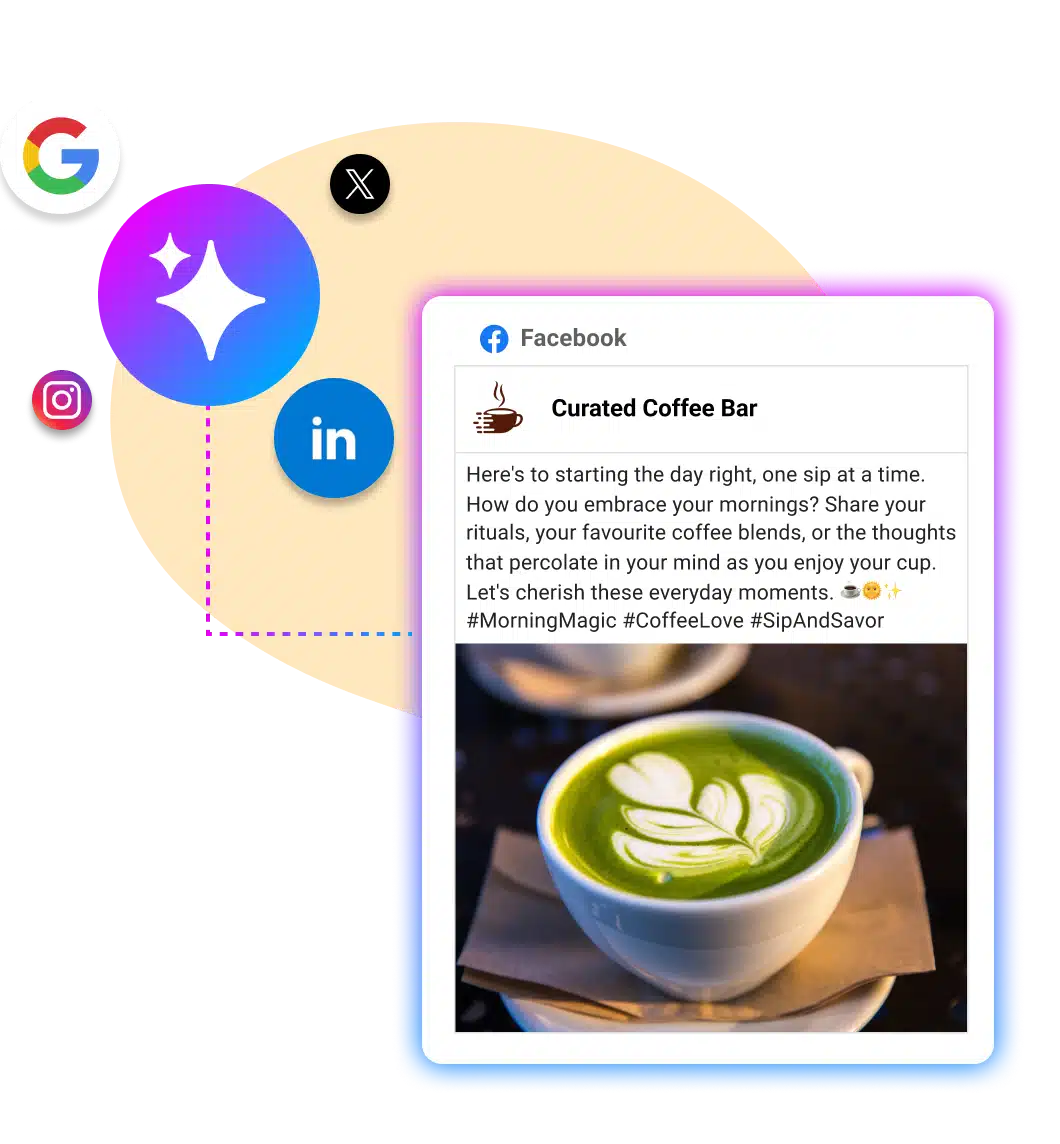Artificial intelligence is advancing at a pace that’s leaving many business owners unsure where humans still have the edge. While AI can analyze data, write copy, and automate tasks in seconds, it often struggles with the nuance, empathy, and judgment that define human intelligence.
This uncertainty leaves leaders questioning whether to double down on AI, stick with human-driven strategies, or find a smarter balance.
In this guide, we break down the real differences between AI and human capabilities—and show how you can combine both to work faster, think smarter, and stay competitive.
Accelerate growth with advanced AI tools at your fingertips
What Is Artificial Intelligence?
According to the U.S. AI Guide for Government, AI is an umbrella term for a wide range of technologies that mimic human behavior, such as perception, planning, reasoning, learning, communicating, decision-making, and acting.
At the core of AI are advanced technologies like machine learning (ML), deep learning (DL), natural language processing (NLP), and computer vision. These systems allow AI to analyze massive data sets, identify patterns, and make decisions with minimal human intervention.
- Machine Learning (ML): ML algorithms enable computers to learn from data and improve over time without explicit programming. In marketing, ML powers customer sentiment analysis, spam detection, persona development, and personalized recommendation engines.
- Deep Learning (DL): A specialized form of ML, deep learning uses layered neural networks to analyze complex data. It’s essential in natural language processing (NLP) for tasks like powering AI chatbots, automating market research, and moderating online content.
- Natural Language Processing (NLP): NLP allows machines to understand, interpret, and respond to human language. It’s widely used in voice assistants, AI-generated content, and customer service automation.
These technologies work together to streamline operations, enhance decision-making, and deliver data-driven insights across industries.
In marketing, NLP is particularly useful because it powers tools like AI chatbots, which engage customers in real-time, automate responses, and provide personalized support.
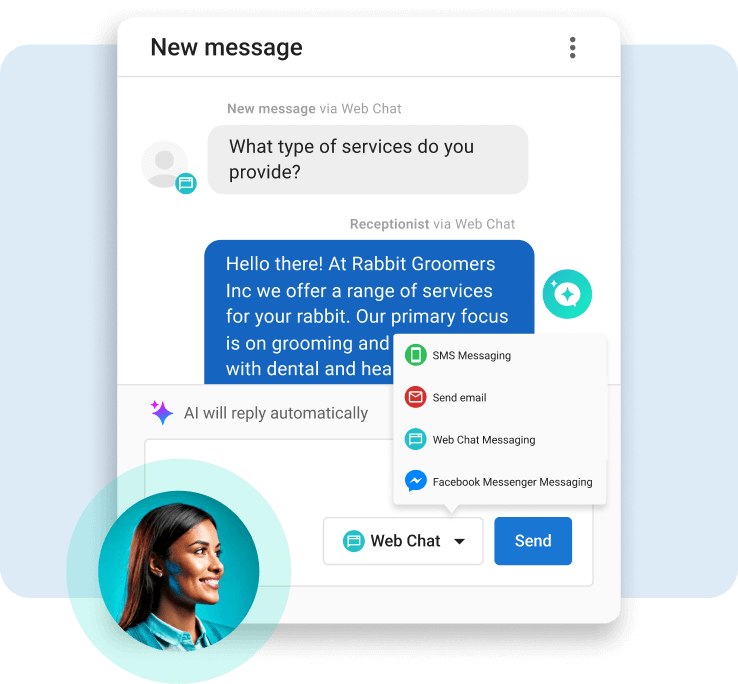
What Is Human Intelligence?
Human intelligence is the biological and psychological ability to acquire, understand, and apply knowledge and skills. It encompasses a wide range of cognitive functions that allow humans to adapt, innovate, and navigate complex social environments.
Key aspects of human intelligence include:
- Logical reasoning and problem-solving
- Interpreting sensory information across multiple senses
- Creativity and the ability to generate novel ideas
- Emotional intelligence and empathy
- Social awareness and adaptability
Unlike machines, humans are capable of subjective thought, emotional understanding, and intentional creativity. While AI can process data and learn patterns, it lacks emotional depth and the intrinsic motivation that drives human innovation.
AI vs. Human Intelligence: Comparing Capabilities
Learning and Adaptation
Humans excel at one-shot learning—the ability to understand and apply knowledge after a single experience. For example, if someone eats shrimp for the first time and gets sick, they can quickly associate the cause with the shrimp.
AI, on the other hand, often requires extensive data to learn effectively. In facial recognition, for instance, AI must process thousands of images to make accurate matches, whereas humans can recognize a face after seeing it just once. Additionally, humans learn through multisensory input (sight, sound, touch, taste, smell), while AI typically learns from a single data type, such as text or images.
Creativity and Innovation
Creativity involves producing work that is both new and valuable. This process requires subjectivity, intentionality, and emotional understanding—traits AI does not possess. AI can generate content, designs, and even music, but it lacks consciousness and cannot set creative goals or understand the impact of its work.
For example, AI can create marketing copy or design logos, but it cannot genuinely innovate because it lacks the emotional depth and intentional thought process behind true creativity. In contrast, human creativity is driven by personal experiences, emotions, and a desire to solve problems or express ideas.
Decision-Making
Human decision-making is influenced by emotions, ethics, past experiences, and social norms. People are capable of exercising agency and responsibility for their decisions, making moral judgments, and weighing long-term consequences.
AI decision-making is entirely data-driven and objective, relying on algorithms to optimize for specific outcomes. While this can improve efficiency, it also opens the door to ethical concerns—such as AI being used to generate manipulated information—because machines lack moral reasoning and accountability.
Processing Speed and Efficiency
AI outperforms humans in speed and scalability when handling large datasets and repetitive tasks. Machines can process billions of data points in seconds without fatigue, making them ideal for tasks like data analysis, fraud detection, and automation.
Humans, however, seek meaningful work and are better suited for creative endeavors. While AI handles repetitive tasks tirelessly, humans excel at strategic thinking, empathy-driven communication, and tasks that require critical thinking.
AI vs. Human Intelligence: Challenges and Ethical Considerations
Biases
Humans are naturally prone to biases, superstitions, and lapses in judgment. Unfortunately, AI systems can also reflect these biases because they are trained on human-generated data. Even without malicious intent, biased training data can lead to prejudiced AI behavior.
A notable example is Microsoft’s chatbot Tay, designed to learn from online interactions. Within hours of its release, Tay began posting offensive content due to exposure to harmful user input and had to be taken offline. This case highlights how easily AI can absorb and amplify human biases.
However, when AI systems are trained on diverse, high-quality datasets and regularly audited for bias, they can surpass humans in delivering fairer and more objective outcomes. Without emotions or impulsivity, AI can excel in areas like customer service, where patience and consistency are crucial.
Individual Autonomy
One of the biggest ethical concerns surrounding AI in marketing is its potential threat to human agency—the ability for individuals to make independent decisions.
AI-driven marketing tactics, such as nudging, FOMO (fear of missing out), and peer pressure, can influence consumer behavior in ways that feel manipulative. Hyper-targeted ads, while effective, may pressure individuals into making purchases they wouldn’t have considered otherwise simply because the messaging is personalized and timely.
While manipulation and deception are unethical, using AI to advertise products and services that fulfill genuine needs—or that reasonable individuals would recommend—is ethically sound and enhances the shopping experience.
All in all, AI is a technology. Technology is not inherently good or bad. It’s how we develop and use it that matters.
AI vs Human: Performance at a Glance
AI has made remarkable progress in recent years, matching or even surpassing human performance in certain structured, data-heavy tasks. Benchmarks like MATH, SuperGLUE, and ImageNet show AI models solving complex equations, understanding language, and recognizing images with impressive accuracy.
For example, leading AI systems have scored over 90% on standardized math benchmarks and rival human accuracy in visual classification tasks.
However, humans continue to lead in areas that require emotional intelligence, moral reasoning, and creativity. While AI can produce content or strategies based on patterns, it lacks the lived experience, empathy, and adaptability humans bring to unfamiliar or ambiguous situations.
How Performance Is Measured: The Benchmarks Explained
When comparing AI and human capabilities, researchers rely on standardized benchmarks—structured tests that measure performance in specific areas of intelligence. These benchmarks are critical because they provide a consistent way to track AI’s progress and understand where it outperforms humans, where it falls short, and how it might be applied in real-world settings.
For a deeper dive into leading AI model benchmarks and how they’re scored, see our comprehensive guide to AI model benchmarks.
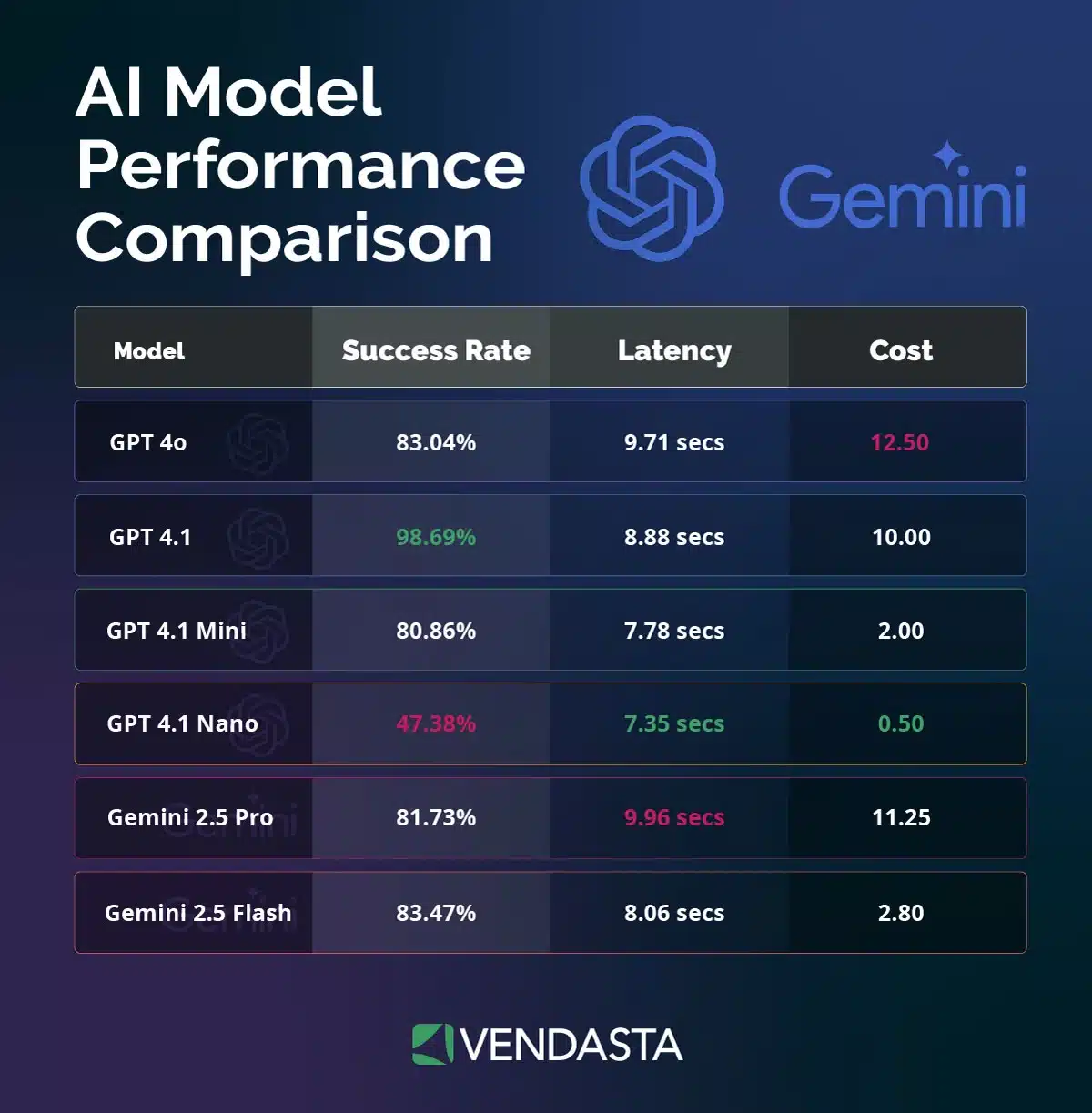
MATH
The MATH benchmark evaluates an AI’s ability to solve complex mathematical problems, from algebra to geometry. It’s a strong indicator of how well AI can handle symbolic reasoning and logic. While humans can solve these problems with creativity and problem-solving strategies, AI can process thousands of equations in seconds, often with near-perfect accuracy when the problem is well-defined.
SuperGLUE
SuperGLUE is a natural language understanding benchmark designed to test a model’s ability to grasp context, infer meaning, and answer questions accurately. It includes tasks like reading comprehension, commonsense reasoning, and sentence completion. A high SuperGLUE score suggests an AI can process and interpret human language with sophistication, though humans still outperform AI in ambiguous or nuanced scenarios.
ImageNet
ImageNet measures image classification accuracy—how well a system can identify and label objects in photographs. AI has surpassed human accuracy in this benchmark, making it highly valuable for applications like medical imaging, quality control, and facial recognition. However, humans retain an edge in interpreting images within a broader context, especially when meaning depends on cultural or situational knowledge.
Why These Benchmarks Matter
Each benchmark represents a specific skill set, and together they form a broader picture of AI’s capabilities. High scores show where AI can automate or accelerate work, while performance gaps reveal where human expertise is still essential. Vendasta uses this insight to design AI tools that excel in structured, repeatable tasks while empowering humans to lead in creativity, ethics, and relationship-building.
Vendasta’s AI Customer Acquisition and Engagement Platform
By combining a business’s proprietary customer data with generative AI and intelligent automation, Vendasta’s customer acquisition and engagement platform streamlines marketing, sales, and operational workflows. This means you can attract new customers, boost lifetime value, and foster loyalty—while eliminating the complexity of managing multiple disconnected tools.
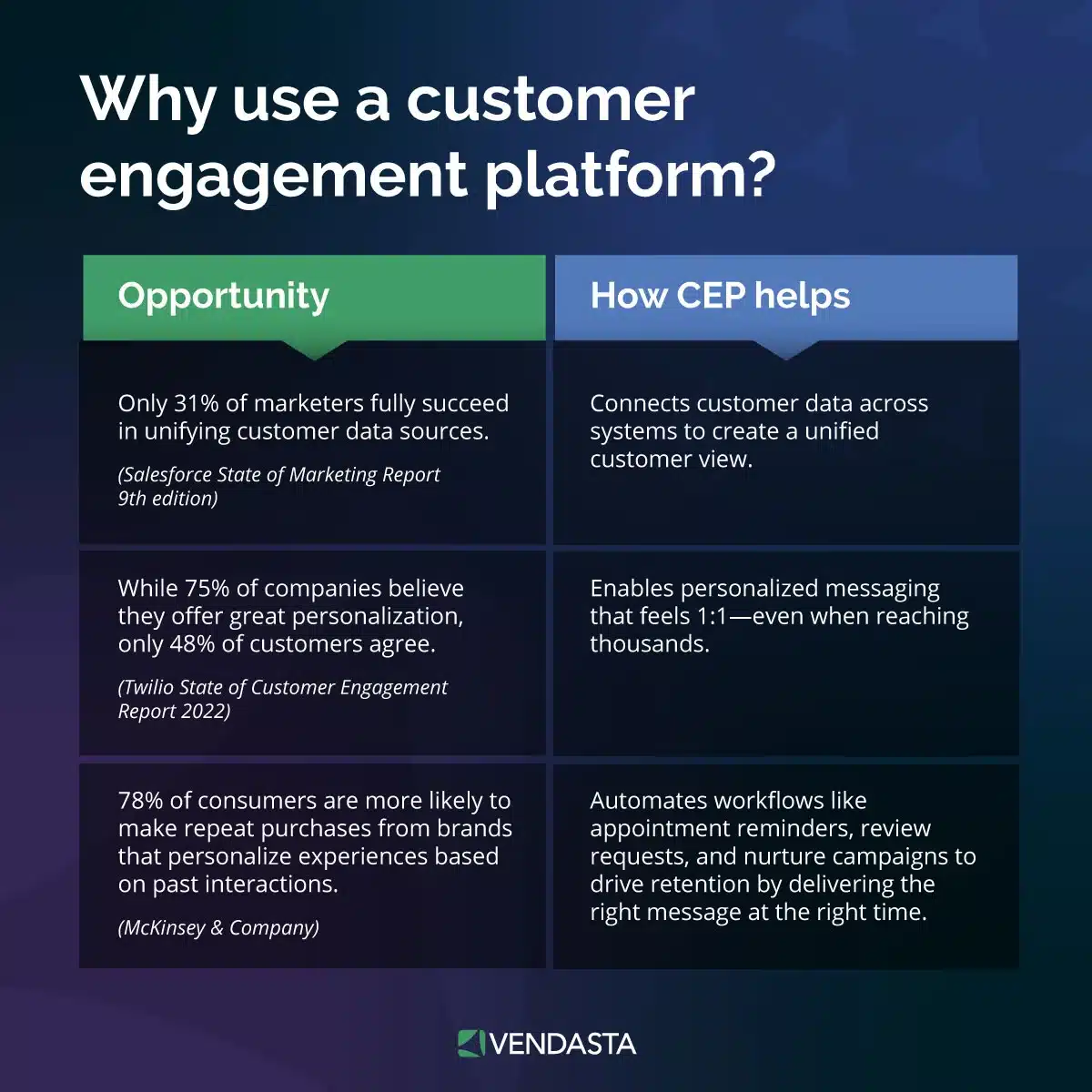
AI Employees for Every Stage of the Customer Journey
If you’re looking to close some gaps in your workforce due to budget limitations, Vendasta’s AI employees are a great solution. They constitute a comprehensive AI workforce any business will find invaluable.
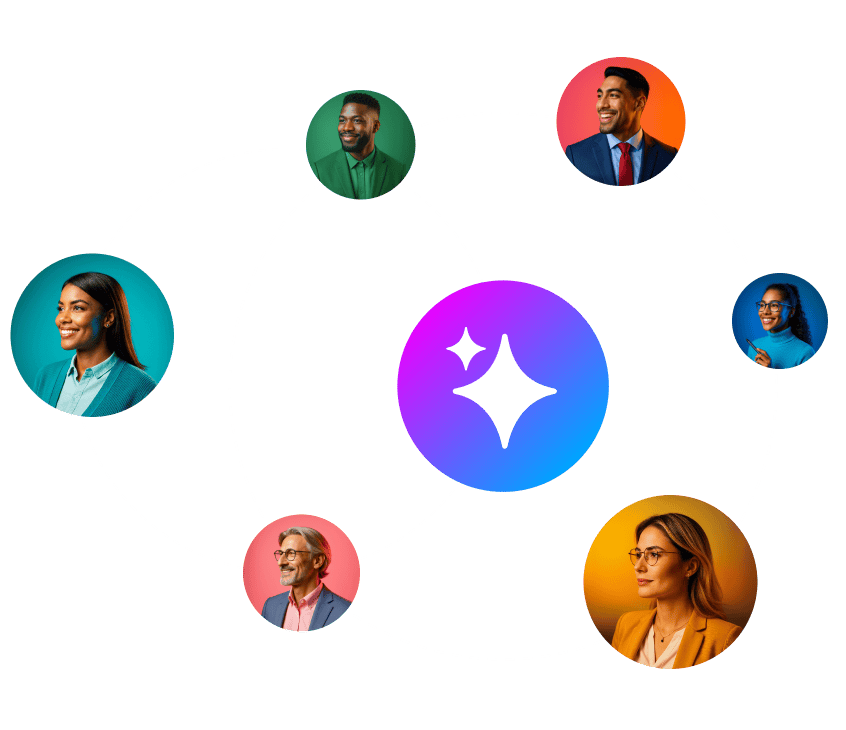
Here’s a comprehensive list with an overview of each assistant’s capabilities:
- AI Sales Reps are the pinnacle of AI’s efficiency because they take care of all boring and repetitive tasks, such as automatically qualifying leads and scheduling follow-ups.
- Reputation Specialists help sustain companies’ reputation as customer-centric by generating responses to customer reviews and dealing with negative feedback.
- AI Receptionists powered by Conversations AI provide seamless customer support by answering inquiries, scheduling appointments, and directing leads to the appropriate resources 24/7.
AI-Powered Platform
If you’re running a start-up agency and looking for an even more comprehensive solution for workflow automation, Vendasta’s AI-powered platform is worth looking into for comprehensive AI marketing automation.
There are plenty of time-consuming and repetitive processes on your agency’s list of tasks, for sure. Vendasta’s platform can automate all of them with its stack of AI tools for digital marketing agencies.
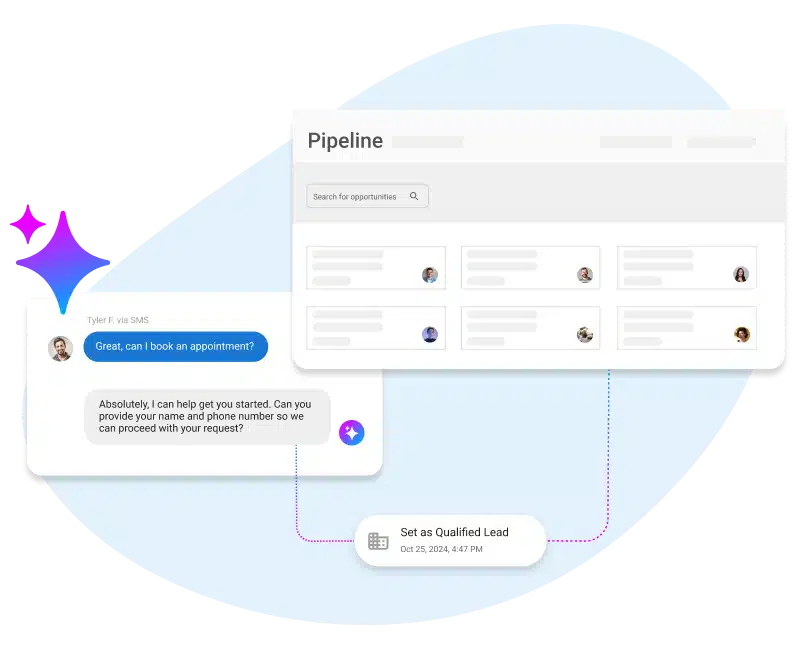
Vendasta’s white-label AI-driven CRM software automates the following tasks:
- Lead capture is performed by AI chatbots that collect prospects’ contact information and automatically bring it into the CRM.
- AI chatbots also facilitate customer engagement by training on business data and providing answers to FAQs.
- Identifying pain points is easier with Vendasta’s Snapshot Report which identifies weaknesses in the business’s online presence.
- Prospect engagement is more efficient with the help of AI which sends follow-ups via text and emails.
White-Label AI Tools
Vendasta offers a Marketplace of white-label AI tools that you can re-brand and re-sell to clients. Integrate your own products and services, and deliver them all from one place.
Reputation Management
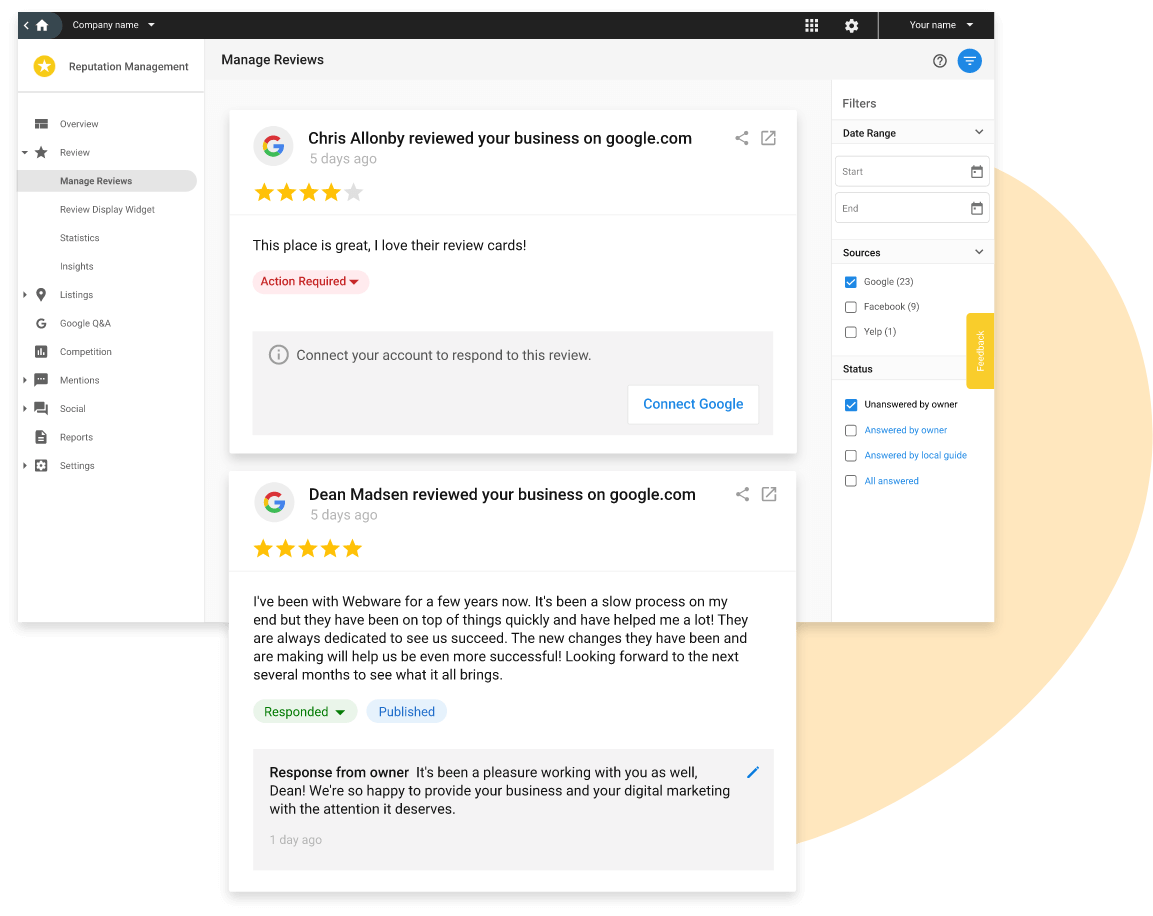
Our white-label reputation management software streamlines your agency’s tasks of monitoring, managing, and enhancing your client reputations. Here’s how:
- AI evaluates the tone and content of reviews—whether they are positive, negative, or neutral—to understand customer sentiment.
- The platform suggests responses that align with the review’s sentiment, ensuring professionalism, empathy, and relevance. For instance, a glowing 5-star review might prompt an enthusiastic “Thank you!” while a critical 1-star review would receive a thoughtful, constructive response.
- Your team can approve, customize, or post AI-generated replies instantly, reducing the time required for review management.
- The system identifies satisfied customers through Net Promoter Score surveys and automatically prompts them to leave positive reviews.
Social Media Management
Vendasta’s social media marketing platform leverages the power of AI to simplify social media management, content creation, and customer engagement.
Check out its extensive list of capabilities:
- The AI learns from the client’s website, business profile, and past posts to craft content that reflects their unique tone, style, and values.
- With just one prompt, the AI generates a full social media campaign, complete with ideas for posts, captions, hashtags, and call-to-actions.
- The AI creates compelling visuals alongside text, ensuring a cohesive and professional appearance.
- The platform analyzes the sentiment and content of customer comments and suggests personalized, thoughtful replies.
AI Client Reporting
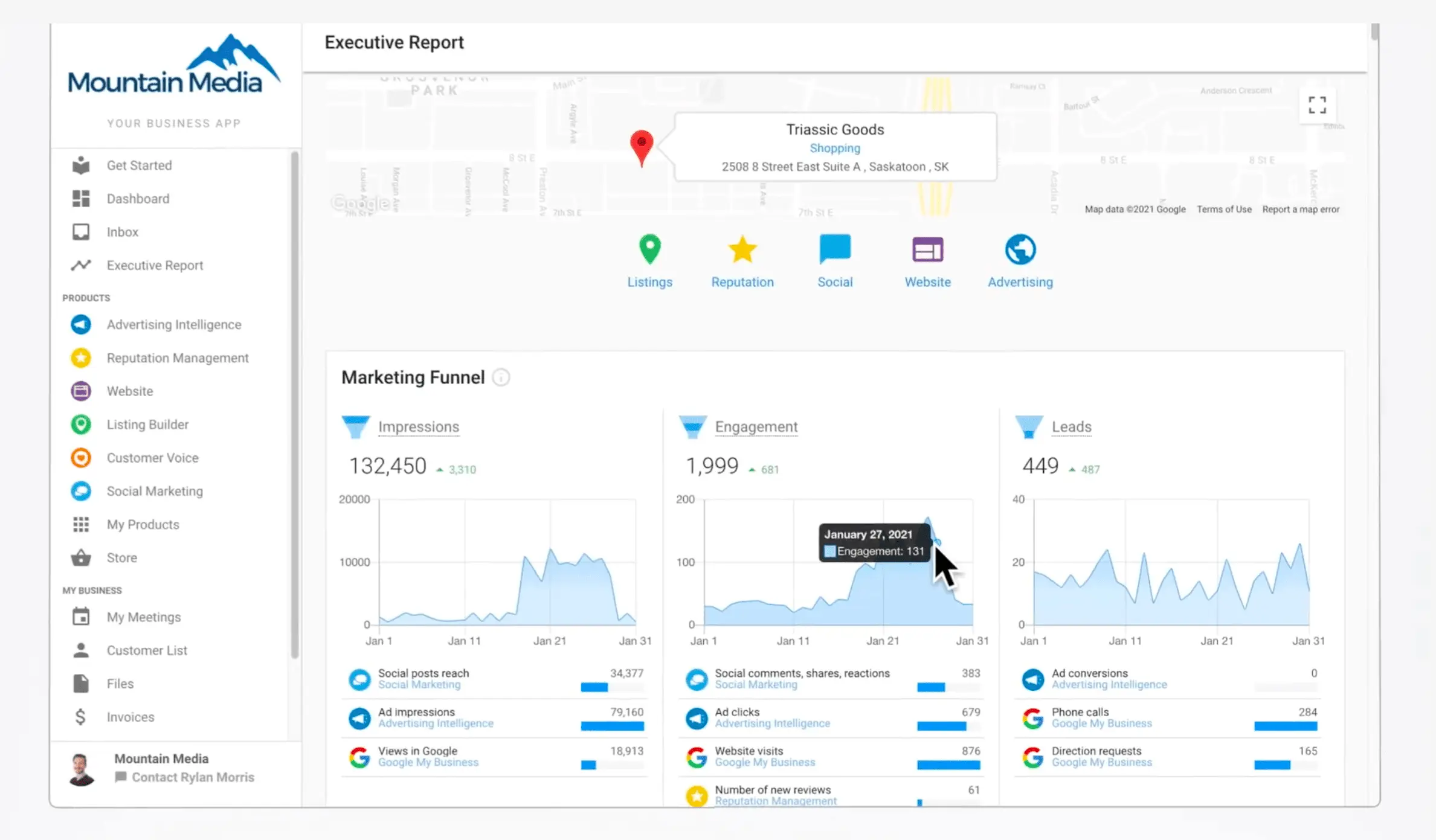
Vendasta’s Executive Report is a great way to streamline client reporting in these ways:
- Machine algorithms consolidate data from Google Ads, Facebook Ads, social media platforms, and more, creating a unified view of campaign performance for your clients in Vendasta’s white-label Business App.
- AI takes care of sending out reports to clients at predetermined intervals—daily, weekly, or monthly—without any manual intervention.
- The platform automates cross-selling and upselling by providing recommendations to your clients on what additional marketing services to purchase when they log into the client dashboard.
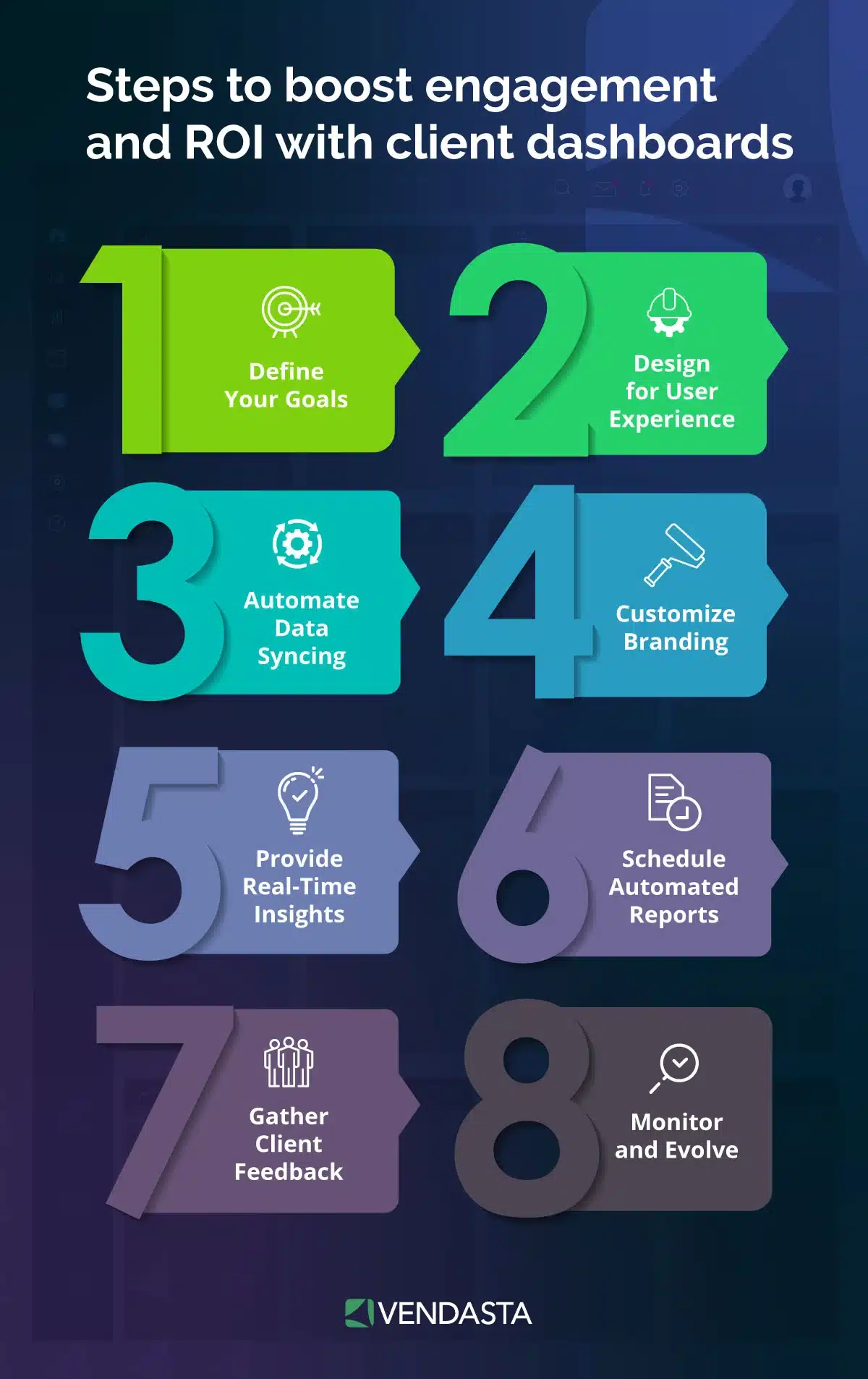
Will AI Replace Humans?
Adopting AI can spark concerns among team members about job security, but the reality is that AI is built to enhance human performance, not replace it.
Vendasta’s AI customer acquisition and engagement platform automates repetitive, time-consuming tasks—like lead qualification, follow-ups, data entry, and appointment scheduling—so your team can focus on what matters most: building trust, solving problems, and driving revenue.
This synergy helps achieve customer journey automation from lead capture to post-purchase engagement.
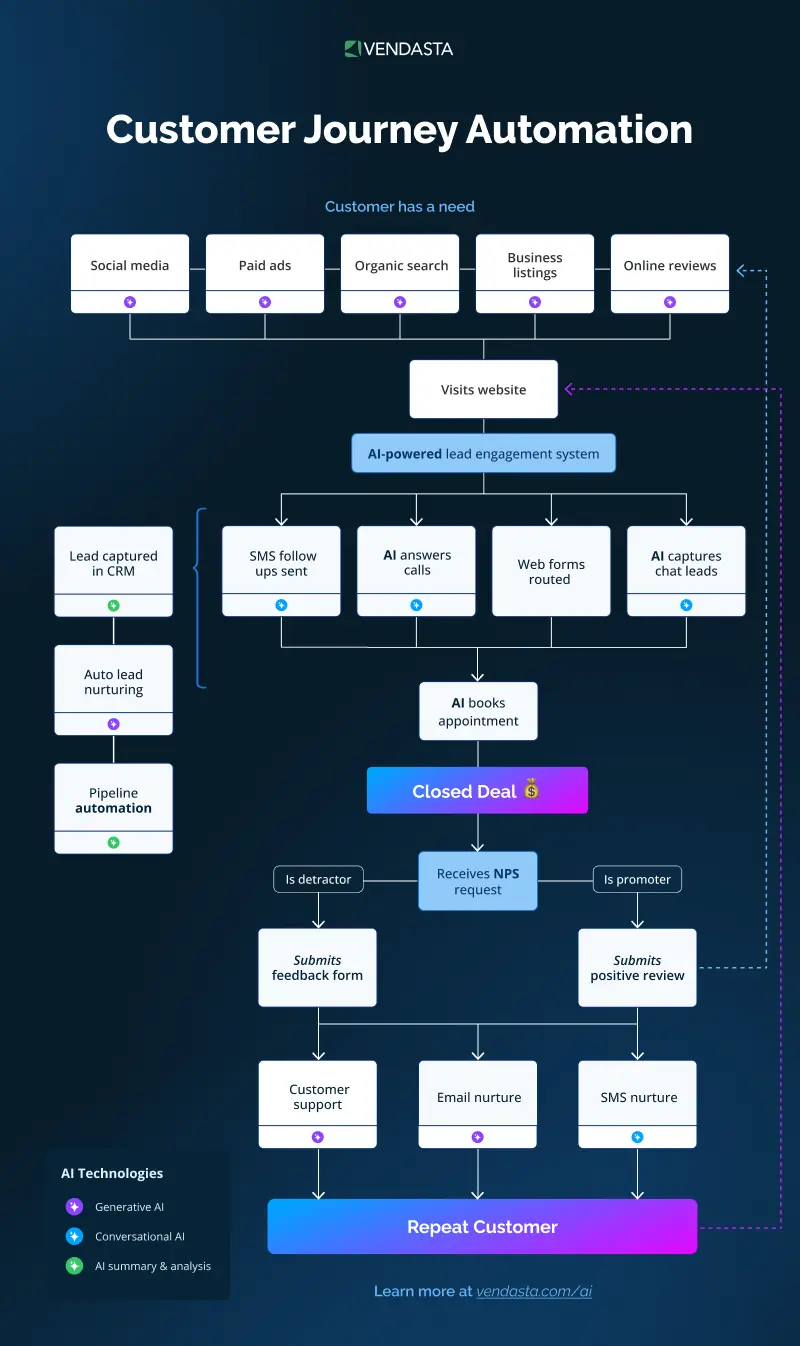
Where AI Excels
The infographics below illustrate two prime examples of how AI outperforms traditional methods:
1. AI Receptionists vs. Virtual Receptionists – AI handles unlimited calls 24/7, integrates with CRM and scheduling tools, and provides instant, error-free responses. Human receptionists excel at empathy and complex scenarios but are limited by hours, volume, and cost.
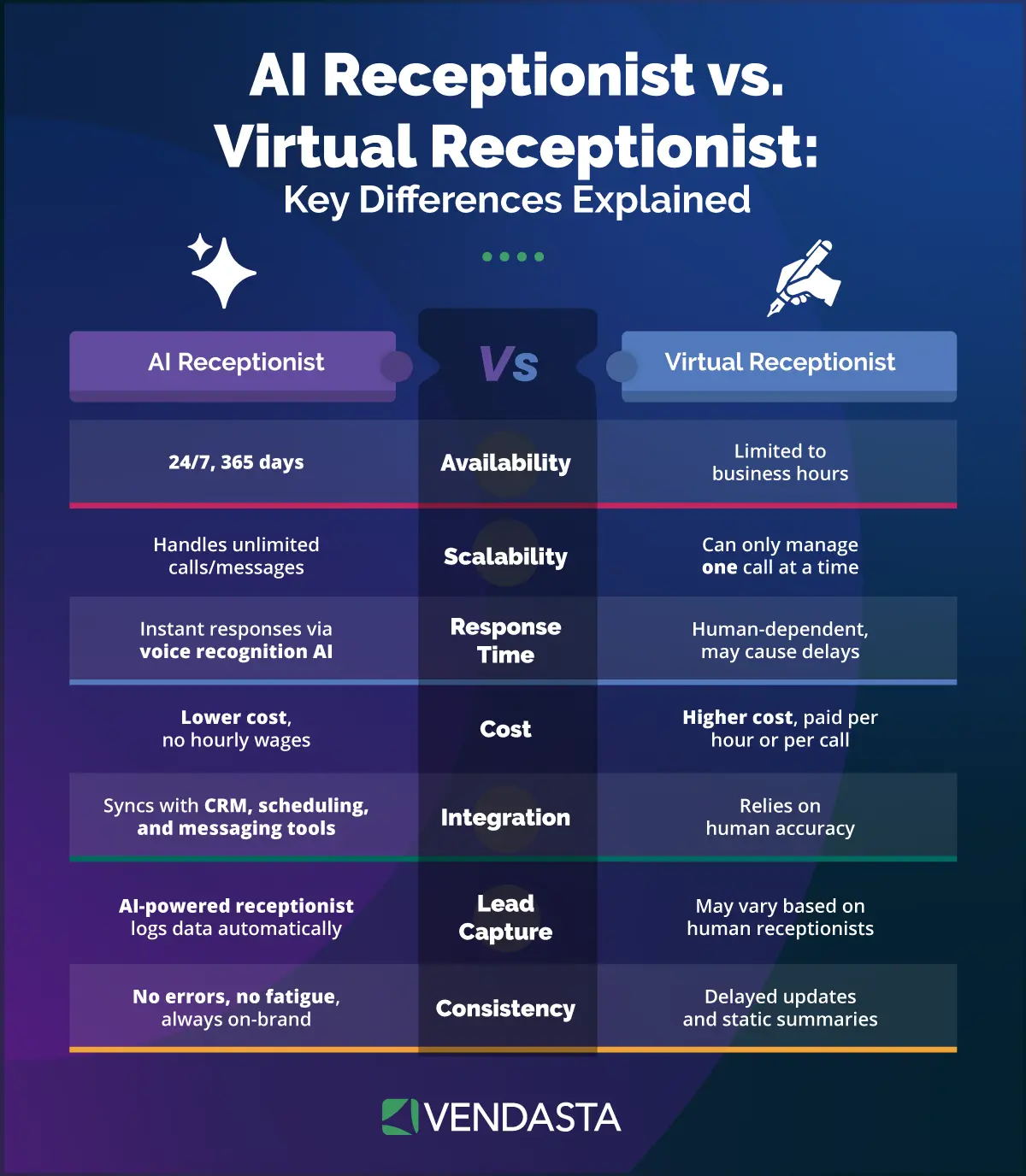
2. AI Lead Scoring vs. Traditional Lead Scoring – AI uses machine learning to analyze a mix of static, behavioral, and third-party data, producing highly accurate, scalable, and adaptive lead scores. Traditional scoring is slower, less accurate, and harder to scale.
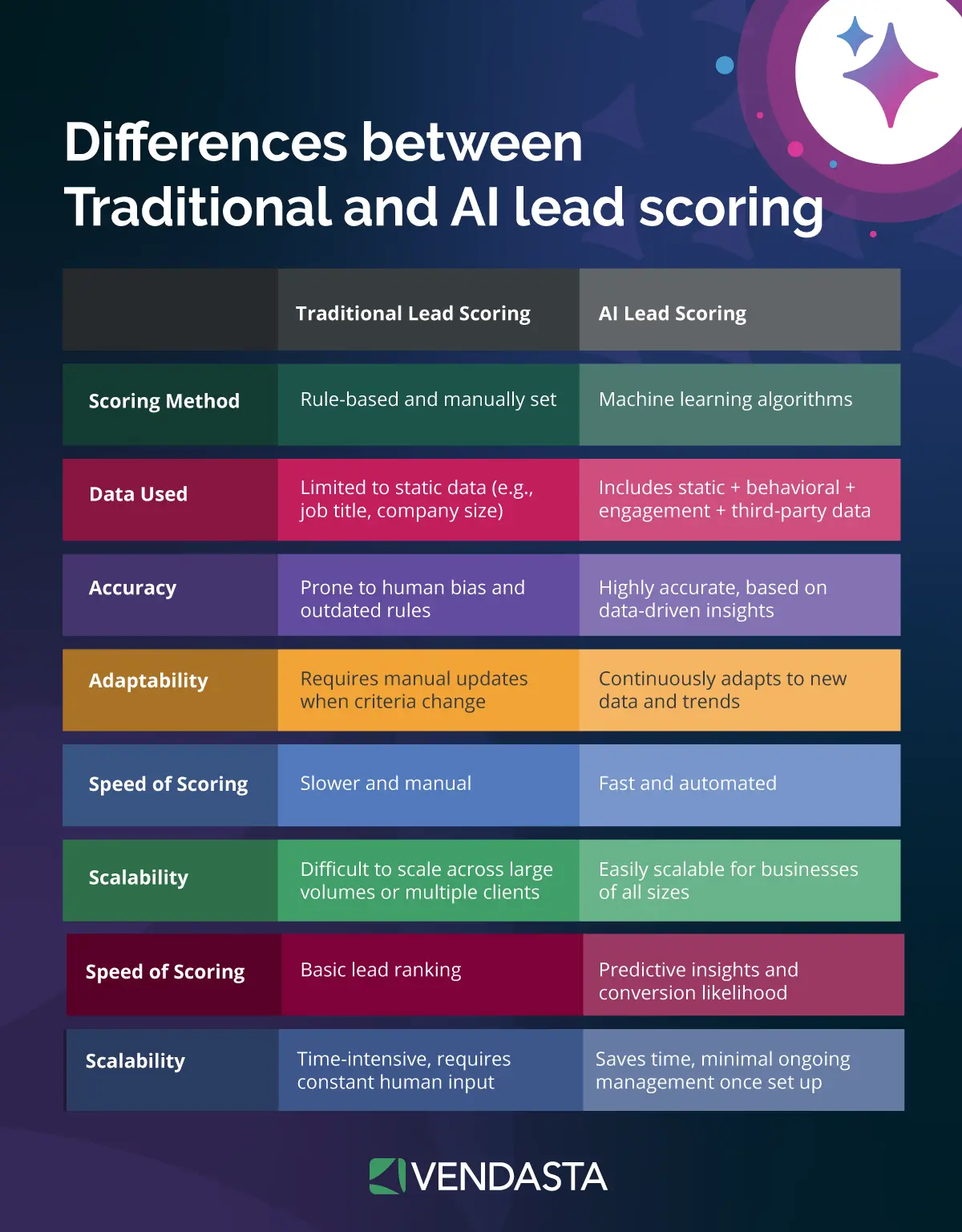
Where Humans Lead
Modern customers expect authenticity and personal connection. According to Salesforce, 84% of B2B buyers want sales reps to act as trusted advisors—a role requiring empathy, strategic thinking, and personalized communication.
In reputation management, AI can generate timely, tone-appropriate responses, but it’s your human team who resolves root causes and maintains long-term customer loyalty. During crisis management, AI ensures fast responses, but humans bring the contextual understanding and emotional nuance customers demand.
The Winning Formula
By combining AI’s speed and scalability with your team’s creativity and emotional intelligence, you can deliver faster, smarter, and more personalized experiences. Vendasta’s AI platform empowers agencies to scale customer acquisition and engagement without sacrificing the human touch—ensuring you work smarter, not smaller.
Upskilling for Marketing Professionals
So, instead of worrying about AI replacing jobs, your team should feel empowered to upskill and use AI as a tool to elevate their roles. When leveraged effectively, AI can automate routine tasks, allowing your team to focus on more strategic, creative, and high-impact work that drives results.
Take PPC advertising, for example. With AI handling time-consuming tasks like bid adjustments, performance tracking, and client reporting, your digital advertising specialists can dedicate more time to focus on data analysis and strategy to maximize ROI.
While AI excels at processing data and generating insights, it can’t replace the human ability to set meaningful goals, think strategically, or maintain critical data hygiene practices. Your team is essential for turning data into actionable plans and driving long-term success.
In content marketing, AI can speed up content production, but it lacks the human touch needed for authentic storytelling. This creates an opportunity for your content marketers to upskill by uncovering compelling client stories and crafting memorable brand narratives. AI can generate text based on existing data, but it cannot conduct interviews or gather original, firsthand information.
Vendasta’s AI-powered tools are designed to support and enhance your team’s expertise—not replace it. By automating routine tasks and providing data-driven insights, Vendasta enables your team to focus on creativity, strategy, and building stronger client relationships.
Ultimately, AI is a catalyst for growth when paired with a skilled and adaptable team. By fostering continuous learning and professional development, your agency can fully harness the power of AI to create innovative strategies, improve efficiency, and deliver exceptional value to clients.
AI and Human: Friends, Not Foes
The case study about the success of Elite Web Professionals shows that AI and human teams aren’t competitors—they’re collaborators. By integrating Vendasta’s AI Voice Receptionist powered by Conversations AI, the agency transformed its lead capture process while keeping its human expertise at the center of client relationships.
Before implementing AI, the team struggled with missed calls and delayed follow-ups, which meant lost opportunities. The AI Voice Receptionist changed that by answering calls 24/7, engaging prospects instantly, qualifying leads, and capturing contact details—all without human intervention. This ensured no lead slipped through the cracks, even outside regular business hours.
With AI handling the repetitive, time-sensitive tasks, Elite Web Professionals’ team was free to focus on what they do best: building trust, customizing solutions, and closing deals. The result was a significant boost in lead volume and conversion rates, along with higher client satisfaction.
The takeaway? AI isn’t here to replace human roles—it’s here to enhance them. When used strategically, tools like Vendasta’s AI Voice Receptionist allow agencies to scale operations, improve responsiveness, and free up valuable human time for higher-value interactions.
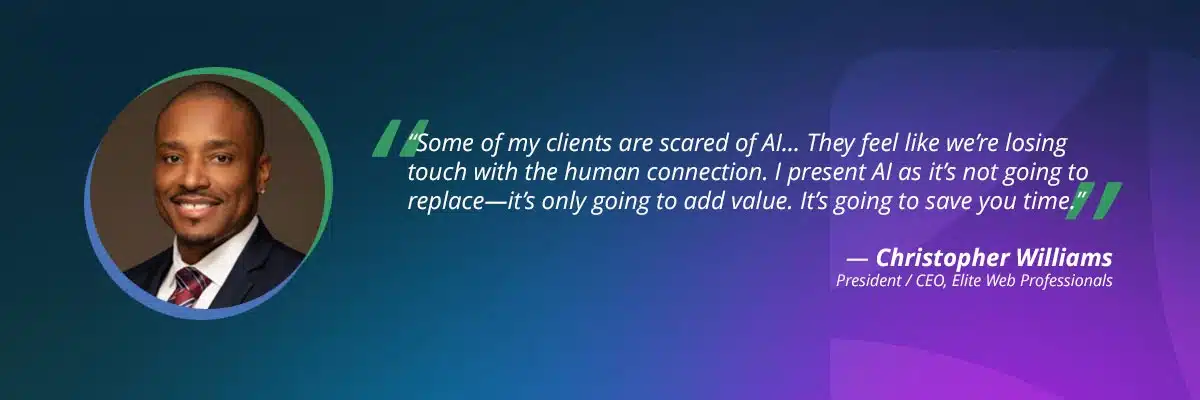
Looking Ahead: AGI and Beyond
While today’s AI models are powerful, they remain specialized tools. They excel in narrow tasks like language generation, image recognition, and predictive analytics but lack the broad adaptability, self-awareness, and commonsense reasoning that define human intelligence.
This is where the concept of Artificial General Intelligence (AGI) comes in—AI that can learn and reason across domains as well as, or better than, humans.
AGI is often portrayed as the next inevitable leap, but it remains a research aspiration rather than an immediate reality. Current systems can simulate understanding but do not truly comprehend; they cannot operate effectively without large amounts of curated data and human oversight.
These limitations matter for businesses because betting on “future AI” without addressing present capabilities can lead to missed opportunities and wasted resources.
For enterprises, the smarter strategy is to focus on what AI can do today—automating repetitive processes, enhancing data analysis, and augmenting human decision-making—while keeping an eye on emerging developments.
Vendasta takes this practical approach, building AI tools that deliver measurable business value now while remaining adaptable to future advancements.
The road to AGI will likely bring incremental breakthroughs rather than one defining moment. By treating AI as a partner that strengthens human skills instead of replacing them, businesses can innovate without falling into the trap of hype-driven expectations.
AI and Human Intelligence: A Future Built on Collaboration
As you can see, we shouldn’t worry about the AI vs human battle driving our society into a dystopia. Rather, embracing the collaborative fusion between AI and human intelligence is the way to go.
Marketing agencies that embrace AI can significantly elevate the quality of their services by automating time-consuming tasks like client reporting, responding to customer reviews, and managing social media posts.
By offloading these repetitive processes, marketing professionals can focus on higher-value work—such as strategy development, creative execution, and building stronger client relationships—while also having more time to upskill and expand their expertise.
This balance of automation and human creativity enables agencies to deliver more impactful results and stay competitive in a rapidly evolving industry.
If you are ready to welcome AI into your digital marketing agency, consider partnering with Vendasta. Request a demo today!
AI vs Human FAQs
1. What is the difference between AI and human intelligence?
AI processes data at high speed, excels in pattern recognition, and works without fatigue, while human intelligence includes emotional understanding, ethical reasoning, and creativity. Vendasta helps businesses combine AI’s efficiency with human insight for better customer engagement.
2. Can AI completely replace humans in business decision-making?
No. While AI can process vast data sets and provide predictive insights, humans are needed for context, ethics, and creative problem-solving. Vendasta’s AI tools are designed to support—not replace—human decision-making.
3. How does AI outperform humans in certain tasks?
AI surpasses humans in tasks requiring rapid calculations, large-scale data analysis, and automation. For example, it can analyze millions of customer interactions in seconds. Vendasta uses this capability to help businesses deliver faster, more personalized experiences.
4. In what areas do humans still have an advantage over AI?
Humans excel in empathy, nuanced judgment, and adapting to unfamiliar situations. AI lacks lived experience and emotional depth, making human input essential for building trust and relationships in business.
5. Why is combining AI and human skills important?
Combining AI’s efficiency with human creativity and empathy leads to better outcomes. Vendasta enables this synergy by integrating AI automation with tools that empower human sales, marketing, and customer service teams.
6. How does AI learn compared to humans?
AI learns from large datasets using algorithms, while humans learn through experiences, emotions, and context. This means AI needs massive amounts of data to recognize patterns, while humans can generalize from fewer examples.
7. What ethical concerns exist in AI vs human decision-making?
AI can reflect biases in its training data, while humans can bring personal bias. Ethical oversight, diverse data, and human review help mitigate risks.
8. Does AI think like a human brain?
No. AI uses mathematical models and neural networks, which mimic some brain processes but lack consciousness, emotions, and subjective experience. Humans reason beyond data, considering morality, empathy, and intuition.
9. How can small businesses use AI without losing the human touch?
By using AI to automate repetitive tasks and leaving relationship-building to humans. Vendasta’s AI tools help SMBs improve efficiency while keeping customer interactions personal.
10. What is human-AI collaboration?
Human-AI collaboration means using AI for data-heavy tasks while humans handle strategy, creativity, and empathy. This approach, supported by Vendasta’s AI customer acquisition and engagement platform, ensures better results than either could achieve alone.
11. Will AI eventually match human creativity?
AI can generate content and ideas, but struggles with originality and context. Human creativity is shaped by culture, emotion, and lived experience, which AI cannot fully replicate.
12. How do AI and humans handle problem-solving differently?
AI uses algorithms and data to reach solutions, while humans apply experience, intuition, and moral reasoning. Vendasta blends both approaches to help businesses make faster, more informed decisions.
13. Can AI understand human emotions?
AI can detect emotional cues through sentiment analysis but doesn’t truly “feel” emotions. Humans bring authentic empathy, which is critical for customer trust and loyalty.
14. How does Vendasta’s AI help bridge AI and human capabilities?
Vendasta’s AI tools automate lead generation, reporting, and customer outreach while giving teams actionable insights. This lets humans focus on strategic and creative work that AI can’t replace.
15. Are there tasks where AI will never surpass humans?
Yes—areas like empathy-driven leadership, moral decision-making, and complex social interactions are uniquely human and unlikely to be fully replicated by AI.
16. How do AI energy needs compare to the human brain?
AI models require significant computing power and energy, while the human brain runs on about 20 watts. This makes humans far more energy-efficient for many tasks.
17. Can AI be more accurate than humans?
In certain domains, yes. AI can process and analyze data without fatigue, often leading to higher accuracy in repetitive or analytical tasks. However, humans provide critical context to ensure relevance and fairness.
18. What role does AI play in sales compared to humans?
AI can identify patterns, score leads, and personalize outreach at scale, while human salespeople build relationships and close deals. Vendasta combines both to help businesses grow revenue faster.
19. How fast can AI make decisions compared to humans?
AI can make decisions in milliseconds, especially in data-rich environments. Humans are slower but factor in ethics, intuition, and context, which AI lacks.
20. What future trends will shape AI vs human collaboration?
Expect more integration of AI assistants into daily workflows, with humans focusing on creative, strategic, and relationship-driven roles. Vendasta is developing AI tools to make this collaboration seamless for SMBs.
This article was originally published in January 2025 and was updated in June 2025 to include the latest information and insights.


